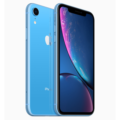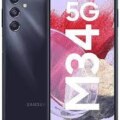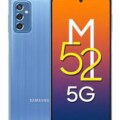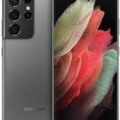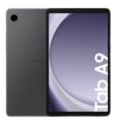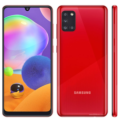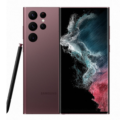- Home
- All Products
- Mobiles
- Apple iPhone 4 Price and Specs
Apple iPhone 4 Price and Specs
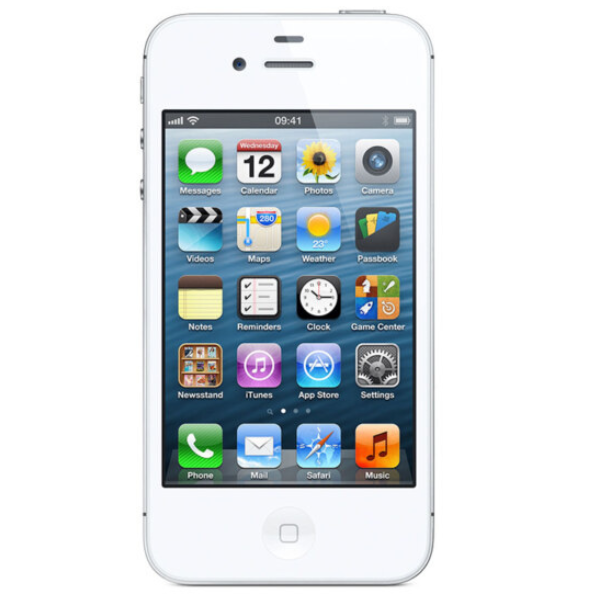

-
Processor: Apple A4
-
RAM: 512MB RAM
-
Storage: 8GB, 16G, 32GB
-
Display: 3.5
-
Camera: 5MP
-
Battery: iOS 4, up to iOS 7.1.2
Specs
General
| Device Type | Smart Phone |
| Model | iPhone 4 |
| Announced | 07 June, 2010 |
| Released | 24 June, 2010 |
| Status | Discontinued |
Network
| 2G Network | GSM 850 / 900 / 1800 / 1900 |
| 3G Network | HSDPA 850 / 900 / 1900 / 2100 Speed,HSPA 7.2/5.76 Mbps |
| SIM <strong>SIM</strong> (Subscriber Identity Module) is a small card that contains mobile network subscriber's account information. This allows the phone using the card to attach to a mobile network. The SIM card is most commonly associated with GSM and UMTS mobile networks. Moving a SIM card from one phone to another allows a subscriber to switch mobile phones without having to contact their mobile network carrier. SIM cards can also be used by a phone to store limited amounts of data, such as phone numbers and text messages. | Micro SIM |
Design
| Type <strong>Design Type</strong> called form factor refers to a mobile phone's size, shape, and style as well as the layout and position of major components of phone. There are three major form factors seen in mobile phones => bar phones, folding phones and sliding phones. | Bar |
| Dimensions | 115.2 x 58.6 x 9.3 mm (4.54 x 2.31 x 0.37 in) |
| Weight | 137 g (4.83 oz) |
| Colors | Black and white |
Display
| Display Type <strong>Display Technology => </strong> A number of display technologies and types used in mobile phones => TFT (Thin Film Transistor), IPS (In-Place Switching), OLED (Organic Light Emitting Diode), AMOLED (Active-Matrix Organic Light-Emitting Diode), Super AMOLED (an even advanced version of AMOLED), Resistive Touchscreen (Resistive touchscreens contain two layer of conductive material with a very small gap between them which acts as a resistance), Capacitive Touchsceen (Capacitive touchscreen technology consists of a layer of glass coated with a transparent conductor) | Bar |
| Size | 3.5 inches, 36.5 cm2 (~54.0% screen-to-body ratio) |
| Resolution | 640 x 960 pixels, 3:2 ratio (~330 ppi density) |
| Display Colors <strong>Display Colors</strong> is refers to the number of different shades of colors that the screen is capable of displaying => 64K colors, 256K colors and 16 million colors, Obviously 16M is highest available range of colors and better than others. | 24-bit color |
| Pixel Density <strong>Pixel Density (PPI)</strong> is refers to the concentration of pixels on a particular display, measured in pixels per inch (ppi). Pixel density is calculated by dividing the diagonal pixel resolution of a display by its diagonal size, higher pixel density better display quality. | 326 pixels per inch |
Software
| Operating System <strong>OS => </strong> Every computer system run on a base software called Operating System (OS). Operating System controls all basic operations of the computer (such as smartphone, PDAs, tablet computers and other handheld devices). The Operating System allows the user to install and run third party applications (apps), apps are used to add new functionality to the device. | iOS 4, up to iOS 7.1.2 |
| User Interface <strong>UI</strong> or user interface of a device is the look and feel of the on-screen menu system. How it works, its color scheme, how it responds to button presses, all of these things are part of the user interface. | iOS UI |
Hardware
| Chipset <strong>Chipset</strong> is a group of integrated circuits designed to perform one or a more dedicated functions, often with real time computing constraints, Popular smartphones are equipped with more advanced embedded chipsets that can do many different tasks depending on their programming. | Chipset Apple A4 (45 nm) |
| CPU <strong>CPU</strong> (Central Processing Unit) mostly known as processors, CPU processes instructions in order to carry out certain functions that make your device operate properly. Processors are often described as the brain of computers, smartphones and tablets, Smartphones and tablets rely on processors to carry out their every task, Processors are an incredibly important factor in selecting any type of computing device, including your smartphone. | PowerVR SGX535 |
| RAM (Memory) <strong>RAM</strong> (Random Access Memory) is a type of computer memory that can be accessed randomly, any byte of memory can be accessed without touching the preceding bytes that allows information to be stored and accessed quickly from random locations. RAM is the most common type of memory found in computer systems, smartphones, tablets and other electronic devices. | 512 MB |
| Internal Storage <strong>Internal Storage</strong> is a data storage space (flash memory) mostly used in smartphones, tablets and other electronic devices where operating system, apps, music, photos, videos, files and other user data Is stored. | 8GB, 16GB, 32GB |
| Card Slot <strong>Memory Card Slot</strong> is a special slot for inserting a memory card. Memory cards allow you to expand the phone's built-in memory, A memory card (sometimes called a flash memory card or a storage card) is a small storage medium used to store data such as text, pictures, audio, and video, for use on small, portable or remote computing devices such as mobile phones, mp3 players, digital cameras. | |
| Sensors <strong>Sensors</strong> are electronic components that detects and responds to some type of input from the physical environment. The specific input could be light, heat, motion, moisture, pressure and location, The output is generally a signal that is converted to use in computing systems, a location sensor, such as a GPS receiver is able to detect current location of your electronic device. | Three-axis gyro. Accelerometer. Proximity sensor. Ambient light sensor. |
Camera
| Primary <strong>Camera</strong> is able to capture photographs and usually videos, The most important characteristics of a camera are the resolution (measured in megapixels), lens focus type (fixed or automatic), higher megapixel cameras are known to capture higher quality photos, but not always a good measurement of the photos quality. | 5 MP, f/2.8, 1/3.2", 1.75µm, AF |
| Secondary | 0.3 MP VGA (480p) |
| Video | HD video (720p) |
| Camera Features |
5 MP back-side illuminated sensor HD video (720p) at 30 frame/s 1.75 μm size pixels 5× digital zoom 4 element lens LED flash Photo and video geotagging. 0.3 MP VGA (480p) at 30 frame/s Tap to focus video or still images Photo and video geotagging |
| Flash <strong>Flash Light => </strong> There is commonly two types of flash lights are used in camera mobile phones, LED Flash (LED flash offers lower power consumption with drive circuitry that takes up very little room, LEDs can be strobed faster than any other light source), Xenon Flash (xenon flash produces an extremely intense full-spectrum white light for a very short duration) |
Connectivity
| Wi-fi <strong>Wi-Fi</strong> is a popular wireless networking technology using radio waves to provide high-speed network connections that allows devices to communicate without cords or cables, Wi-Fi is increasingly becoming the preferred mode of internet connectivity all over the world. | Wi-Fi 802.11 b/g/n |
| Bluetooth <strong>Bluetooth</strong> is a wireless communications technology for exchanging data between mobile phones, headsets, computers and other network devices over short distances without wires, Bluetooth technology was primarily designed to support simple wireless networking of personal consumer devices. | Yes, v2.1, A2DP, LE |
| GPS <strong>GPS</strong> The Global Positioning System is a satellite-based radio navigation system, GPS permits users to determine their position, velocity and the time 24 hours a day, in all weather, anywhere in the world, In order to locate your position, your device or GPS receiver must have a clear view of the sky. | Yes, with A-GPS support and GLONASS |
| Wi-fi Hotspot | |
| USB | No |
| NFC <strong>NFC</strong> (Near field communication) is a set of standards for smartphones and similar devices to establish peer-to-peer radio communications with each other by touching them together or bringing them into proximity, usually no more than a few inches. | |
| Wireless Charging <strong>Wireless Charging</strong> (Inductive Charging) uses an electromagnetic field to transfer energy between two objects. This is usually done with a charging station. Energy is sent through an inductive coupling to an electrical device, which can then use that energy to charge batteries or run the device. |
Data
| GPRS <strong>GPRS</strong> (General Packet Radio Service) is a packet oriented mobile data service on the 2G and 3G cellular communication system's global system for mobile communications (GSM), Generally, GPRS is used for the purpose of wireless data transfer, such as sharing pictures and videos or browsing the Internet via a mobile phone connection. | |
| EDGE <strong>EDGE</strong> (Enhanced Data GSM Environment) is a wireless network technology generally considered the next step in the 2G network offers data transfer rates up to four times faster than ordinary GSM networks, Generally, EDGE is used for the purpose of wireless data transfer, such as sharing pictures and videos or browsing the Internet via a mobile phone connection. | |
| Speed | 668kbps and 254kbps |
Messaging
| SMS <strong>SMS</strong> (Short Messaging Service) is a text messaging service component of phone, Web, or mobile communication systems. It uses standardized communications protocols to allow mobile phone devices to exchange short text messages over the networks. | Yes |
| MMS <strong>MMS</strong> (Multimedia Messaging Service) is a standard way to send messages that include multimedia content (audio clips, video clips and images) to and from mobile phones over wireless networks using the WAP protocol. | |
| Email <strong>Email</strong> (Electronic Mail) is a system for receiving, sending, and storing electronic messages, Similar to a letter, email is text messages that may contain files, images, or other attachments sent via the internet to a recipient by using applications and software prograps. An email address is required to receive email, and that address is unique to the user. |
Media
| Audio Playback | |
| Video Playback | |
| FM Radio | |
| Loudspeaker | |
| Ring Tones | MP3, WAV |
| Alert Types | Vibration, ringtones |
| Handsfree | 3.5mm Headphone Jack |
Battery
| Battery Type <strong>Battery Type => </strong> Cell phones run on various kinds of batteries depending on the manufacturer, phone size or shape and features. There are basically four types of cell phone batteries => Lithium Polymer, Lithium Ion, Nickel Metal Hydride and Nickel Cadmium. | Li-Ion (Lithium Ion) |
| Capacity <strong>Battery Capacity</strong> is a measure (typically in Amp-hr) of the charge stored by the battery, and is determined by the mass of active material contained in the battery. The battery capacity represents the maximum amount of energy that can be extracted from the battery under certain conditions. | 1420mAh |
| Placement | Fixed |
| Standby <strong>Standby Time</strong> is the total amount of time that you can leave your is fully charged, turned on and ready to send and receive calls or data transmissions before completely discharging the battery. | 300 Hours |
| Talk Time <strong>Talk Time</strong> is the longest time that a single battery charge will last when you are constantly talking on the phone under perfect conditions, Ambient temperature and highly dependent on the cellular network environment such as the distance to the closest cell network tower. | Up to 7 h (3G) |
| Music Play | Up to 40 hours |
The iPhone 4 is a smartphone created by Apple Inc. The fourth-generation iPhone was unveiled on June 24, 2010. The iPhone 4 has a 3.5-inch Retina display with a 640 x 960-pixel resolution, a dual-core A4 processor, a 5-megapixel camera, and Apple’s iOS 4 operating system. It was also the first iPhone to include FaceTime video calling, a front-facing camera, and a stylish glass and stainless steel design. The iPhone 4 received high marks for its upgraded hardware and design, and despite costing more than other smartphones, it did well in sales. It was criticized as well for the reception problems brought on by the antenna design.
Table of Contents
Iphone 4 price in Pakistan
The iPhone 4 was introduced in 2010 but is no longer offered by authorized retailers. In Pakistan, the cost of a used or refurbished iPhone 4 will vary depending on the seller, storage capacity, and condition of the device. The iPhone 4 price in Pakistan is probably lower, though, as it is now an older model and has been replaced by several newer iPhone models like the iPhone 4s & iPhone 5s. Check websites like OLX, Daraz, or iShopping to find the most recent iPhone 5s prices in Pakistan. Remember that prices on these websites can vary, and you should always exercise caution when buying from individual sellers.
Connectivity & Networking
Connectivity options on the iPhone 4 include 2G, 3G, and Wi-Fi. It also has A-GPS for location tracking and Bluetooth 2.1 for wireless data transfer. It can be used with many carriers globally and is compatible with both GSM and CDMA network frequencies. At the time of its release, the built-in micro-SIM card slot on the iPhone 4 was a novel feature. Additionally, it can browse the web, stream videos, and download files at high speeds thanks to its support for data speeds of up to 7.2 Mbps for HSDPA and 5.76 Mbps for HSUPA.
Design of iphone 4
With a more angular and sleek appearance than previous models, the iPhone 4’s design marked a significant departure from them. It has a stainless steel frame surrounding a glass front and back panel. The design received high marks for both its aesthetic appeal and construction quality, with the glass panels adding a touch of class. The 3.5-inch Retina display on the iPhone 4 has a resolution of 640 x 960 pixels, which is a significant improvement over earlier models. The phone has a 5-megapixel rear camera with LED flash in addition to a front-facing camera for FaceTime video calls.
The front and back panels of the iPhone 4 are made of glass, and a stainless steel band surrounds the edges of the device, giving it a now-iconic appearance. It was regarded as one of the most beautiful smartphones of its time and its design had an impact on the appearance of later iPhone models.
Memory of iphone 4
There were two storage options for the iPhone 4: 8GB and 16GB. The only storage option for apps, music, videos, photos, and other files was internal storage because there was no microSD card slot for expandable storage. The 16GB version offered additional storage for those who required it, while the 8GB version served as a more affordable option. The iPhone 4’s internal storage was sufficient for the majority of users at the time. Still, some users may view the lack of expandable storage and the smaller storage capacities compared to more recent smartphones as a drawback. Despite this, the iPhone 4 remained a well-liked and profitable gadget. As storage requirements increased, many users opted to upgrade to later models or transfer their data to cloud storage.
Processor of iphone 4
The A4 chip from Apple, which was the company’s first specially designed system-on-a-chip, powered the iPhone 4. (SoC). One of the fastest mobile processors available at the time of its release, the A4 chip had dual cores and clocked in at 1GHz. Additionally, it featured an integrated PowerVR SGX535 GPU that could handle graphically demanding tasks like gaming, video playback, and augmented reality. The iPhone 4’s A4 chip made it possible for iOS 4, the most recent version of Apple’s mobile operating system, to run quickly and smoothly. Later iPhones and iPads were built on top of the A4 chip as Apple continued to develop and enhance its proprietary SoC designs over time. Overall, the A4 chip played a significant role in the performance and success of the iPhone 4, and it paved the way for succeeding iPhone and mobile device generations.
Camera specs of iphone 4
A 5-megapixel camera with a 2592 x 1936 pixel resolution is available on the iPhone 4. Tap-to-focus, autofocus, LED flash, and the ability to record HD video at 720p resolution at 30 frames per second are just a few of the features available on the camera. Basic photo editing functions like cropping, rotating, and adjusting brightness and contrast are also built into the camera. The iPhone 4 has a VGA-quality front-facing camera that supports FaceTime video calls. The iPhone 4’s camera, in general, significantly outperformed earlier iterations and gave users a capable camera for both still photos and video recording.
Performance of apple iPhone 4
For its performance at the time of its release, the iPhone 4 received positive reviews. It had 512MB of RAM and was powered by Apple’s A4 chip, a dual-core processor with a 1GHz clock speed. The iPhone 4’s hardware made it possible for iOS 4, the most recent version of Apple’s mobile operating system, to run smoothly and effectively. The 512MB of RAM allowed for seamless multitasking and quick app switching, and the A4 chip delivered a strong performance for gaming and other graphics-intensive tasks. Additionally, the 3.5-inch Retina display on the iPhone 4 delivered sharp and clear images with a resolution of 640 x 960 pixels. Users praised the iPhone 4’s performance and all-around user experience, and it was widely regarded as one of the fastest and most powerful smartphones of its time.
Apple iPhone 4 different City Prices in Pakistan
| City | Price |
|---|---|
| Price in Islamabad | Rs 56,000/- |
| Price in Lahore | Rs 56,000/- |
| Price in Karachi | Rs 56,000/- |
| Price in Faisalabad | Rs 56,000/- |
| Price in Peshawar | Rs 56,000/ |
| Price in Quetta | Rs 56,000 |
Conclusion
The iPhone 4 was, in the history of smartphones, a significant and influential device. Many users favored it because of its attractive design, potent performance, and capable camera. Even though it was released more than ten years ago, the iPhone 4 is still useful today, especially for people looking for a smaller, less expensive device. Its influence on the smartphone market cannot be overstated given how its technology and design continue to influence iPhone and other mobile devices generations after it. The iPhone 4 continues to be one of the most well-known and recognizable smartphones of all time, and its legacy lives on.
FAQ
What is the price of iPhone 4 in Pakistan?
The price of iphone 4 was 56,000 when it was launched now it’s discontinued.
Apple Iphone 4 Launch Date?
June 24, 2010 is the launch date of Apple Iphone 4.
What is the price of iPhone 4 in Pakistan 2023?
Price of iPhone 4 in Pakistan 2023 is 9,800.
Can iPhone 4 get iOS 14?
No not at all, Apple says that iOS 14 can run on the iPhone 6s and later.
What is iphone 4 size?
It is 115 millimeters (4.5 in) high, 58.6 millimeters (2.31 in) wide, and 9.4 millimeters (0.37 in) deep
Disclaimer: The Apple iPhone 4 prices listed on this page are sourced from local shops and dealers and are updated daily. While we strive for accuracy, we cannot guarantee that the price information of the Apple iPhone 4 provided on this page is 100% correct, as human error is possible. We recommend that you visit your local shop for exact pricing information. Thank you for your understanding.


